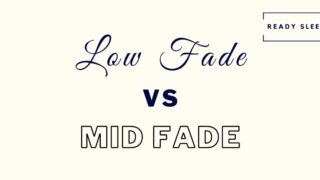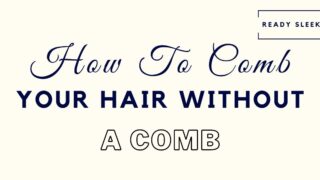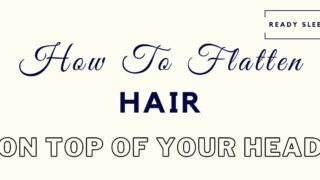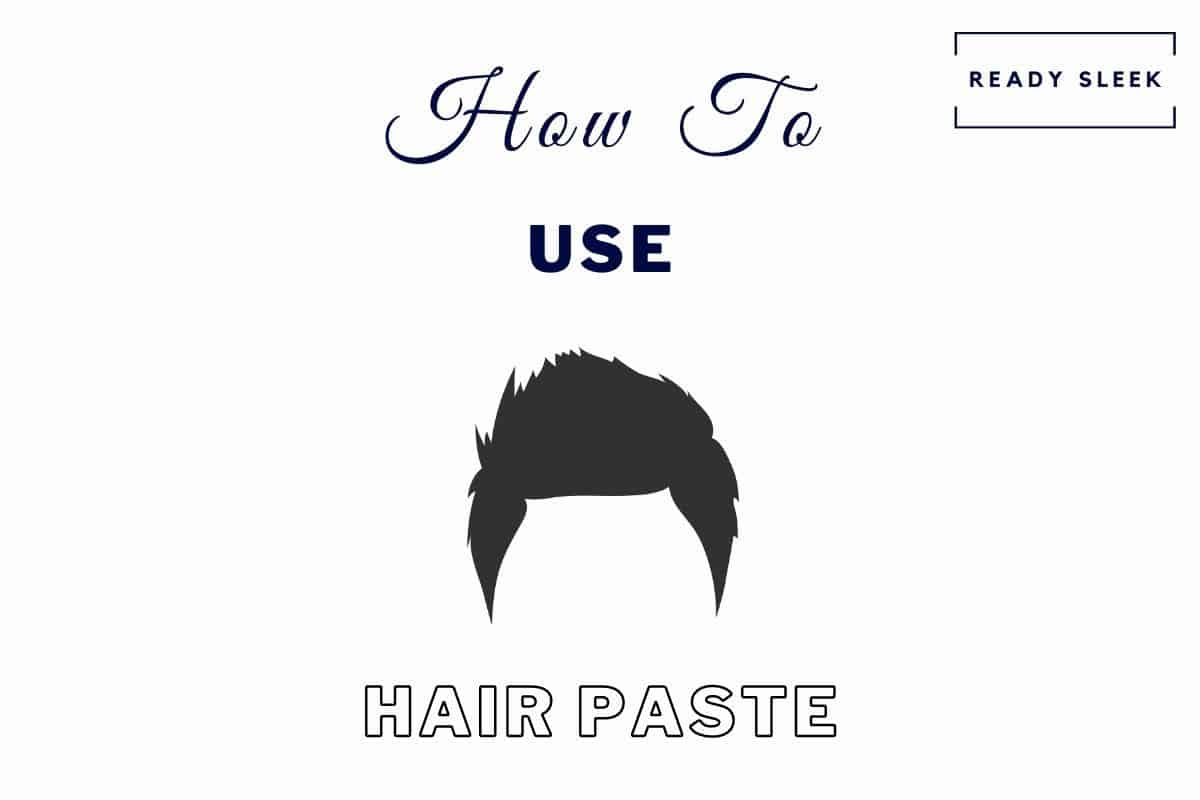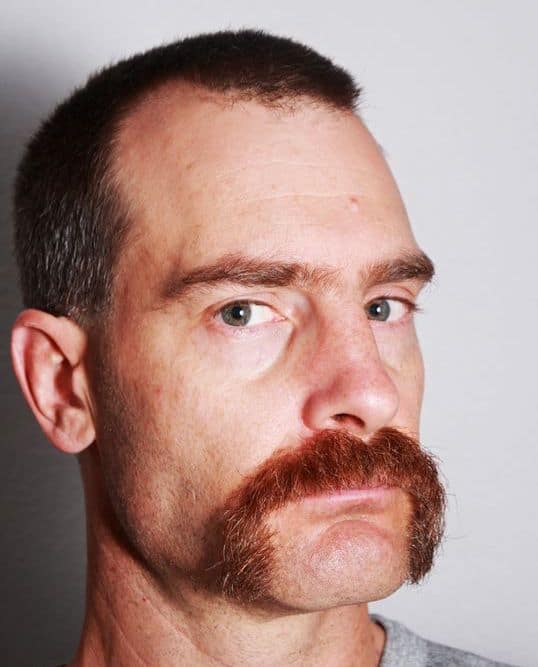While some men dream of full and voluptuous heads of hair, others are sick of it. Too much volume can be a bad thing. Here are some easy ways to reduce hair volume quickly and effectively.
Let’s get to it.
9 Ways To Reduce Hair Volume (For Guys)
Experiment with these tips, tricks, and techniques to find out what works for you and your hair.
Whether it’s reducing weight, softening, smoothing, or styling, there’s a great chance that some of this stuff will work for you.
1. Get The Right Haircut
Whether it’s too thick, too frizzy, or too fluffy, hair that seems to always have too much volume can often be fixed by getting the right haircut.
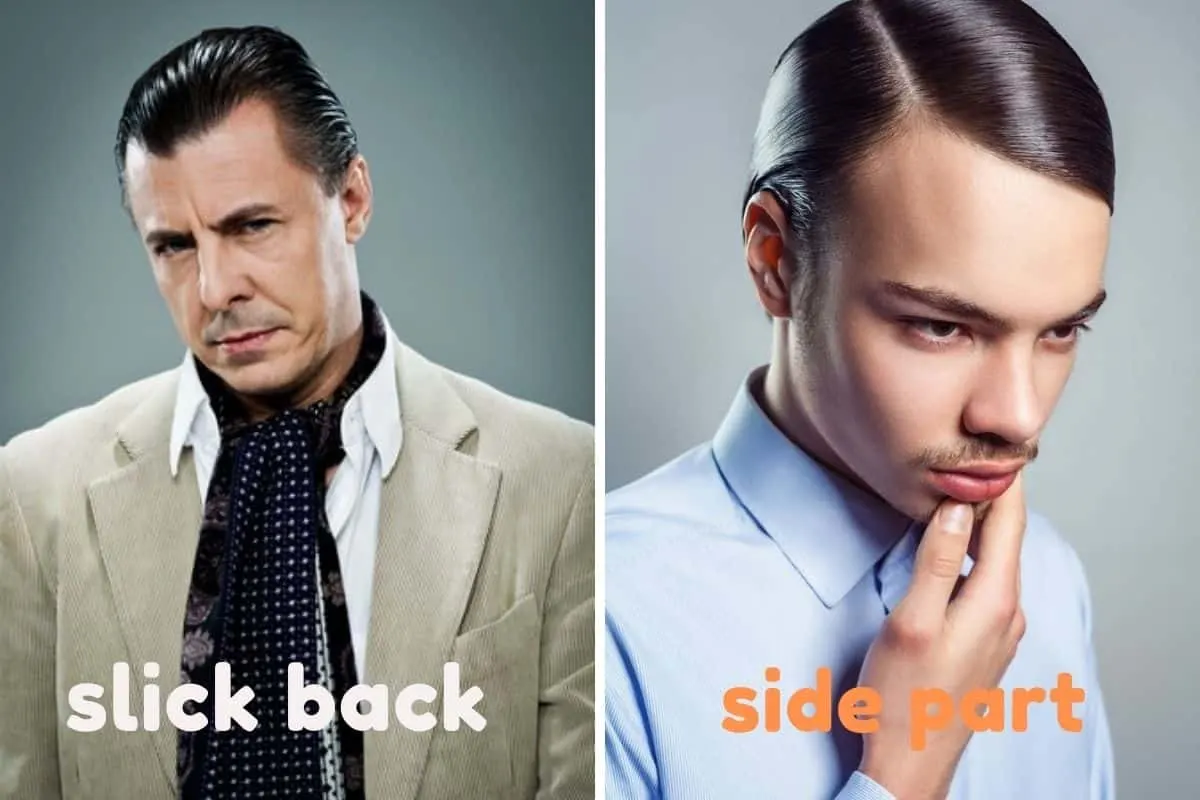
Images from Shutterstock and Deposit Photos
When visiting your barber, ask for two things in particular:
- Less bulk
- Less layering
Men with especially thick hair will often look like they’ve got a lot of volume and fullness. It may get to a point where it has a lion’s mane appearance to it.
This bulk can be reduced by a good barber.
Keeping things pretty short is a good place to start. Buzz cuts and crew cuts can’t look like they have too much volume because there’s just not much length there.
If you’d rather have a longer haircut, ask your barber to remove some of the weight using thinning shears during your haircut.
Yes, it’s possible to DIY this – thinning shears are available to buy. But it’s a better idea to ask a barber or stylist to do it for you because there’s a risk you make things look too thin.
You’ll also want to avoid overly layered or textured hairstyles.
Many modern hairstyles are layered; short layers on top with longer layers underneath. This gives an illusion of texture and fullness, as the many strands of different lengths tend to prop each other up.
It makes it easier to build volume and texture.
But men who want to reduce their hair volume would be better off with a more uniform style that’s less layered and less textured.
It’ll make it easier to lay the hair flatter, with less fullness/volume and more definition.
2. Use A Heavy Conditioner
This one might sound strange to some. Conditioners often make people think of fullness and increasing volume.
But the truth is that conditioners can often weigh the hair down, making it more likely to lay flat and to reduce the hair’s volume.
It softens, moisturizes, and smoothens the hair.
This silky-soft finish feels great to touch, but it also makes it harder for the hair to achieve real lift.
You may have noticed this yourself. After applying conditioner, the hair is just so silky that it prefers to flop down flat.
It’s neater, straighter, and flatter. Less frizz, less fullness, and less volume.
So, if you find yourself shying away from conditioners, they may be worth giving a try.
Shampooing is important for cleansing, but it actually isn’t quite as helpful as applying a dense conditioner is afterward for reducing volume.
It won’t add quite as much weight as a conditioner would.
3. Dry With The Right Towel
This is one thing that many men don’t even think of.
Picture what happens when you aggressively dry your hair with a bath towel after a shower.
You’re rubbing those strands back and forth with it to wipe off every last ounce of moisture you possibly can.
This creates static and frizz. It’s building volume and not in a desirable way.
It’s something you probably don’t even realize you’re doing until you stop doing it and try something else.
But how else do you dry your hair?
You could try towel-drying it but gently and to a lesser extent, letting most of the moisture air dry instead.
Or, you could wrap the towel around your head instead, letting the moisture seep out slowly but surely. This one is more time-consuming and isn’t ideal when you’re in a rush to get ready in the morning.
Another alternative would be to avoid the rough-textured bath towel and to go for a microfiber towel instead. You could even try a soft cotton T-shirt if you wanted to.
These are just less likely to cause frizz and build unwanted volume than a normal bath towel.
4. Use A Smoothing Lotion
A smoothing lotion is a pre-styler.
What’s a pre-styler?
It’s something you apply to the hair before you style it in order to make it more responsive and cooperative when you do style it.
There are many different types of pre-styler and they can fulfill a bunch of different functions. In fact, there are lots of pre-stylers that work to build volume – that’s not what we want.
A better option would be a smoothening pre-styler. Lotions work well here.
Moroccanoil Smoothing Lotion (Amazon Link) is a great example.

A smoothing lotion should be applied to damp hair post-shower and towel-drying. It can then be allowed to air dry or gently blow-dried.
As I’ll be discussing in the next step, air drying is often better when you’re looking to reduce volume.
But gently blow-drying damp hair with smoothing lotion applied to it can be a good way to activate the smoothing lotion and lead to a silkier finish.
When the hair is smoother, it’ll be more likely to lay flatter, neater, and be less frizzy. All of this reduces volume.
Pre-stylers won’t be for everyone. One reason would be the cost – ultimately, adding an additional step and product to your grooming routine will always add to the cost.
But you don’t need to use one every time you style your hair. You could use it sparingly and only on the days where you really want to look frizz and volume-free.
Another reason men sometimes shy away from pre-stylers is the effort. Adding this step to your routine will also add to the time it takes to get ready.
But smoothing lotions are quick and easy to apply – it really doesn’t take much time or effort to spread them through before air drying or blow-drying as you would do in any case.
Try one out for yourself – there’s a good chance you’ll love it.
5. Air Drying Is Often Better
Blow drying is a pillar of building volume. They’re honestly phenomenal at it.
When you’re looking to reduce volume, there’s a good chance a blow dryer will work against your main objective.
That isn’t always the case, however. As you’ll see in the next tip, when you know how to use a blow dryer, they can indeed be used to get rid of volume where you don’t want it.
But if you’re not careful, blow-drying can inadvertently add volume, fullness, and lift. Three things you probably don’t want if you’re reading this article.
To keep things simple – air drying may be a better option for you, skipping the blow dryer altogether.
It may add some time to your routine in the morning. One of the perks of using a blow dryer is that your hair dries in no time, ready for styling within 20 seconds.
But if you’ve got the time or you’re simply willing to leave the house with slightly damp hair, letting it air dry is a good option when you’re looking for a less voluminous and flatter end result.
There’s a catch here, however.
There are definitely certain hair types that go frizzy when you let it air dry. This obviously isn’t ideal.
If this refers to you, as I mentioned earlier – try towel-drying with a microfiber towel first.
But if you’re still finding that air drying just causes too much frizz, blow-drying would be the way to go for you.
Just do it the right way.
6. Blow Dry – Flat Wrapping And Negative Pressure
There are two basic blow drying techniques I find effective for reducing volume – flat wrapping and negative pressure.
Flat Wrapping
Flat wrapping is a technique where you use a hairbrush to brush in your desired direction throughout the hair.
The difference is that you’re following the hairbrush with a blow dryer in your other hand.
The type of brush you choose isn’t crucial, but a paddle brush often works well.
A concentrator nozzle is essential – this is an attachment you pop onto the end of the blow dryer to help you focus the pressure and heat into narrower and more precise areas.
So, brush with one hand and follow it up with the concentrator nozzle of a blow dryer with the other.
The two should happen entirely in sync.
Don’t leave the nozzle too close to the hair – 8 inches away will be fine. I prefer a medium heat setting as well – too much heat is never a good thing.
But go for a high-speed setting.
What this does is make the hair lie flatter against the scalp, using the pressure and heat from the blow dryer to cement the effects of the hairbrush.
It’s a great way to reduce volume. It’s also a great way to make hair lie in directions it may not naturally want to lie in, but doing so without causing it to spring back up and increase the volume.
Negative Pressure
Negative pressure may sound fancy but it’s really not.
All it means is that you’re using the pressure from the blow dryer to take away volume in the very specific areas you don’t volume.
It’s as simple as that.
Most of the time, blow dryers work by increasing volume and fullness. But people forget that they can be used to achieve the exact opposite as well.
Let’s use a quiff as an example.
Quiffs have the forelock standing tall with the hair behind it lying flatter. After styling the forelock, you may find that the hair behind it just refuses to lay as flat as you would want it.
Just use the concentrator nozzle of a blow dryer to target some pressure and heat in the narrow areas behind the quiff to make it lay flatter.
What this will do is make the quiff look taller and more impressive in comparison, and also leave the hair behind it looking neater as well.
7. Flat Iron
Men often shy away from flat irons. They’re time-consuming and tricky to get to grips with at first.
There’s also the risk of using excessive heat on your hair. Over time, this will do damage.
But use a heat protectant spray beforehand and also don’t do it every day – stick to special occasions.
Using a flat iron to straighten the hair is a great way to reduce volume and to leave it laying neater, flatter, and more uniform.
It’s a good option for troublesome, stubborn hair that just won’t respond to the other tips and tricks in this list.
But use the lowest heat possible to achieve the look you want and minimize the amount of time your locks have in contact with the heat.
8. Use An Oil Based Product
Oil-based hair products are generally heavy and slick. They weigh the hair down and make it shiny.
What this does is leave the hair looking flatter, more defined, and glossier.
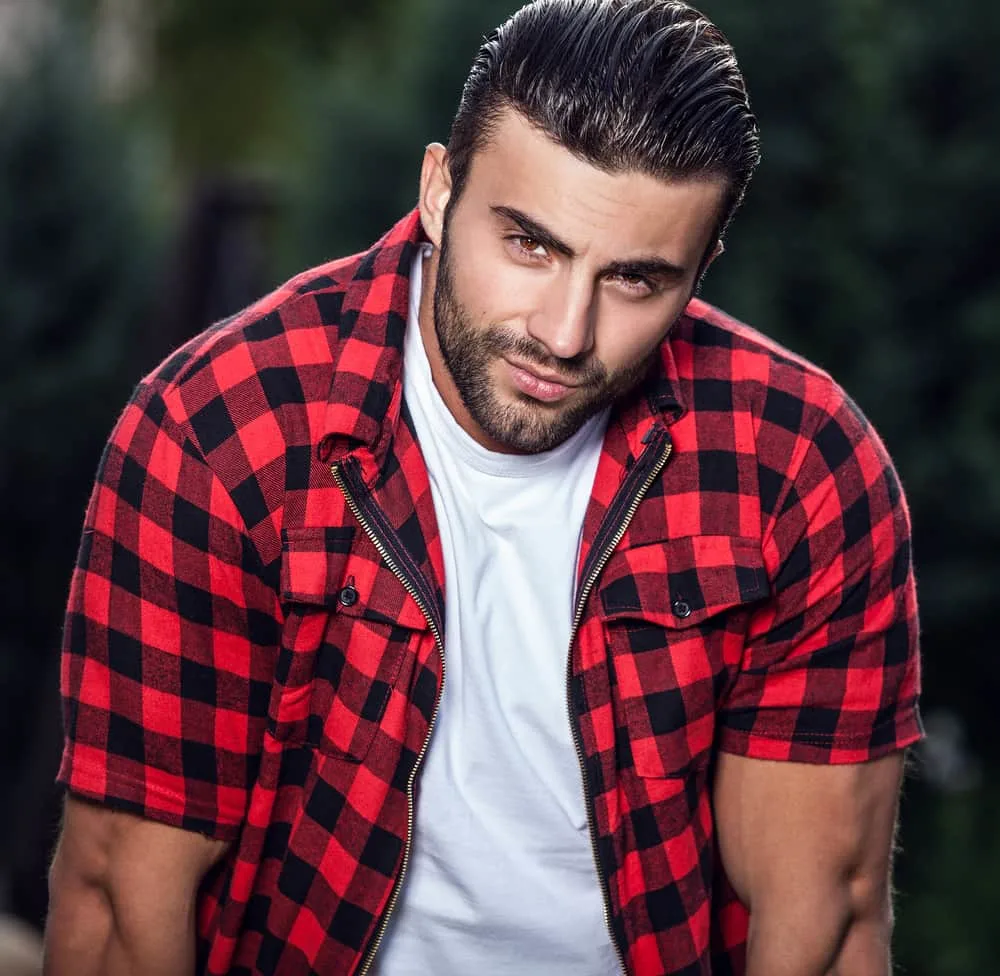
For some men – this is ideal. It gives you a formal-looking finish and is better suited to classic and traditional hairstyles like slick backs, comb overs, and pompadours.
If you’re looking for a more modern, matte, and textured finish – this isn’t ideal. Go for a clay or paste instead.
Just know that products like clays, paste, and creams are better for building volume as opposed to reducing it.
In fact, hair clays contain minerals such as bentonite and kaolin that actually absorb water and make it look fuller than it otherwise would.
Great for building volume, not for getting rid of it.
When you want to reduce volume, the heavier, slicker, and shinier products are better.
Most of the time, these products are oil-based. We’re talking oil-based pomades and hair waxes to be more specific.
But not all shiny products are oil-based. Water-based products like water-based pomades and hair gels are also super shiny and great for giving you a slick and defined finish.
They’ve also got the benefit of being easier to wash out than oil-based products. A downside for some, however, would be the stiff hold (as opposed to pliable).
But they do allow you to flatten out the hair and produce a finish with less volume and more definition.
To sum that up, when you’re looking to reduce hair volume, consider the following:
- Good Products: Oil-based and water-based pomades, hair waxes, and gels
- Bad Products: Clays, pastes, creams, and mousses
9. Style With The Grain
When you’re looking to flatten hair out, style it in the direction it likes to naturally fall in.
If you find that certain parts of your hair just seem to spring back up no matter what you do (giving the illusion of increased volume), there’s a good chance you’re trying to style it against the grain.
In other words, against its natural direction of growth.
Cowlicks are notorious for this. These are small areas where the hair grows in many different directions, creating a sort of spiral pattern.
Trying to comb or style all of this in one direction will inevitably cause some of the hairs to spring up because you’re trying to force them in directions they don’t want to lie in.
So, pay attention to the many different directions your hair wants to lie in when styling. If you’re finding that some areas just refuse to lay flat, try styling them in a different direction (their preferred direction of growth) to see if it does the trick.
There’s a good chance it does.
What you choose to style your hair also makes a difference.
Using your fingers is great when you’re looking to build strand separation and texture. But it won’t produce a finish that’s as neat, flat, or defined as a comb or hairbrush would.
The fine teeth of a comb are great for producing a very tight and slick finish. When you’re looking for a low volume, defined finish, a comb would be a better option than using your hands.
To sum that up, style with the grain and be careful with your choice of styling tool as well.
Conclusion
There you have it.
Try these out and find the ones that work for you.
Figuring out why your hair seems to have so much volume is the first step to really pinpointing the right solutions.
Hopefully, this article has pointed you in exactly the right direction.
Enjoy.
Ready Sleek founder. Obsessed with casual style and the minimalist approach to building a highly functional wardrobe. Also a fan of classic, vintage hairstyles.

![9 Simple Ways To Reduce Hair Volume [Men’s Guide]](https://www.readysleek.com/wp-content/uploads/2021/07/How-to-reduce-hair-volume-mens-guide-720x405.jpg)
